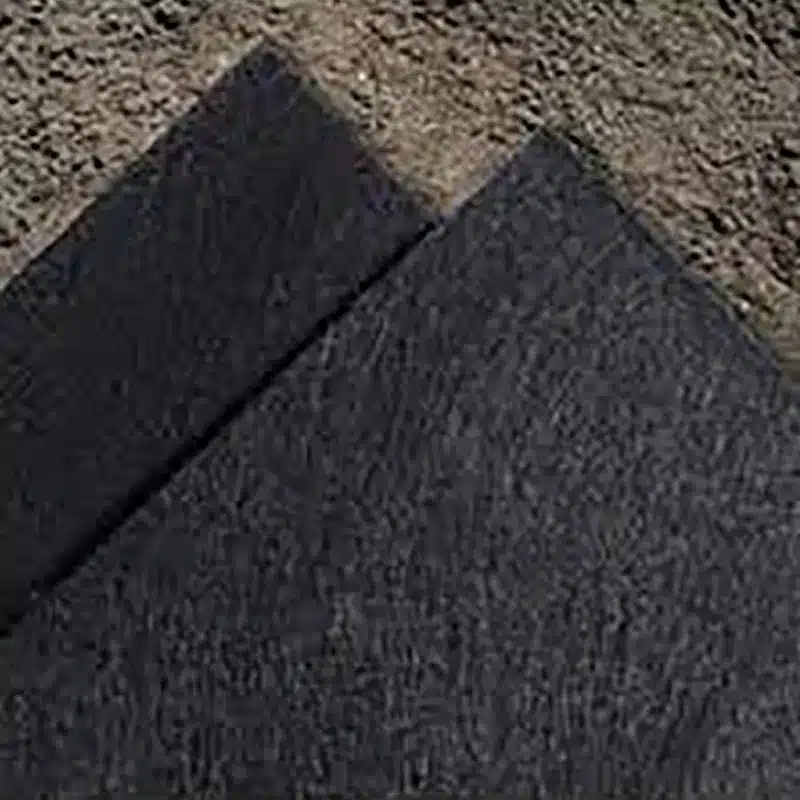+86-159 9860 6917
info@geofantex.com
geofantex@gmail.com
+86-400-8266163-44899
Nonwoven geotextile materials are pivotal in modern engineering and construction, primarily through fabric reinforcement. This popular science article explores the mechanics and applications of nonwoven geotextile fabric, addressing its reinforcement capabilities, uses, permeability to water, and strength. Geotextile fabrics are fundamental in supporting structures and ensuring the longevity and environmental compatibility of various projects.
How does geotextile provide reinforcement?
Geotextile fabrics, particularly nonwoven types, reinforce soil by providing a stabilizing interface that distributes loads and reduces stress on underlying materials. They function by absorbing and spreading out the forces exerted by vehicular and pedestrian traffic or by natural elements like water and wind. This distribution prevents soil displacement and erosion, thereby maintaining the structure’s integrity. Additionally, the physical properties of nonwoven geotextiles—like tensile strength and elongation capacity—make them ideal for resisting the pressures and strains from the earth that might otherwise cause cracking or sinking. Moreover, the fabric is resistant to chemical and biological elements, enhancing its utility by providing essential filtration, drainage, and support to potentially unstable soil structures.

What is non-woven geotextile fabric used for?
Non-woven geotextile fabric is predominantly used in scenarios where separation and filtration are necessary alongside reinforcement, particularly in filtration, separation, and drainage applications. Common uses include road construction, where it separates the subgrade from aggregate layers, landscape engineering for soil stabilization, and drainage systems where its filtration capabilities are crucial. Additionally, it is extensively employed in erosion control projects, such as protecting riverbanks and coastlines from erosion, effectively securing the soil while allowing vegetation to take root.
Does woven geotextile fabric let water through?
Yes, woven geotextile fabrics are permeable and allow the passage of water while preventing the movement of soil particles. Their permeability is specifically engineered to offer efficient filtration and provide drainage by enabling water to seep through. This ability to allow water flow prevents the buildup of hydrostatic pressure and facilitates proper drainage, crucial for maintaining the stability of structures and preventing waterlogging or subsidence. However, it’s important to note that the permeability can vary based on the specific fabric used and the project requirements.
How strong is geotextile fabric?
Geotextile fabrics are designed to be incredibly durable, with high tensile strength essential for withstanding the stresses from load-bearing applications. Nonwoven geotextiles, for example, exhibit excellent strength against puncture, tearing, and abrasion, which are critical properties for applications involving rough and uneven base materials. The high tensile strength of geotextile fabrics can be quantified through various standardized tests that measure tensile strength, puncture resistance, and elongation at break, ensuring they meet specific engineering and safety standards.
Nonwoven geotextile fabric is a cornerstone of modern engineering, particularly in the realm of fabric reinforcement. With its capability to reinforce, filter, and drain, it offers a versatile solution that enhances the durability and stability of various infrastructural projects. Whether it’s used for road construction, erosion control, or landscape stabilization, nonwoven geotextile fabric addresses multiple challenges in civil engineering by combining strength, permeability, and protective functions in one material. Its widespread use underscores its effectiveness and the evolving nature of geotechnical engineering.



Get Free Sample
We’ll respond as soon as possible(within 12 hours)






















